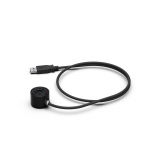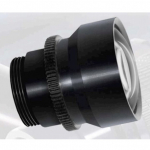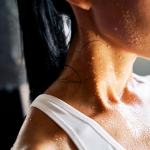Top 5 sensor products in May
Electronic Specifier takes a look at the top 5 sensors products to have been released in May 2023.
Miniature 6-axis force-torque sensor to elevate robotics performance

Designed to enhance micro-robotic systems with haptic feedback, the MiniONE is a six-axis sensor that is simple to install between a robot arm and almost any end of arm tooling (EOAT). Bota Systems will be showing the MiniONE at ICRA, the IEEE International Conference on Robotics and Automation, from 29 May – 2 June 2023, in London, UK (booth I19).
With a tiny footprint, and weighing 30g, the MiniONE is ideal for medical applications, product testing, as well as precision tasks like micro-assembly and micro-polishing. It is also well suited as a fingertip sensor in hands and grippers, as in humanoid robots. Read more.
Radiation resistant low light lens

Manufactured from radiation resistant glass – the Model 313 fixed focus lens from Resolve Optics has an aperture of f/1.4 to enable as much light as possible to be gathered and transmitted to your sensor.
Design optimised for use with 2/3-inch image format cameras, the Model 313 is the perfect choice for low light applications in the nuclear industry and space exploration.
The optical glass selected for use in this lens is proven to withstand long-term exposure to radiation up to a dose of 100,000,000 rads and temperatures to 55°C without discolouration. The Model 313 lens delivers high image resolution and minimum geometric distortion from 400 to 770nm. Read more.
TRUMPF VCSEL enables proximity sensor in iPhone
.jpg)
TRUMPF Photonic Components has been featured as a key supplier by Apple for its work supporting the proximity sensor in iPhone.
The proximity sensor for iPhone turns off the screen when it detects an object that is close by — such as when a user holds iPhone up to their ear — saving power and preventing inadvertent touches.
“We have already shipped over 1 billion of our VCSELs to Apple. It’s great to see that our components are widely used in everyday life and enable great experiences,” says Berthold Schmidt, CEO at TRUMPF Photonic Components. Read more.
3D-printed wearable sweat sensor
 Researchers at the University of Hawaiʻi at Mānoa College of Engineering have taken a leap forward in sweat analysis with a 3D-printed wearable sweat sensor called the ‘sweatainer.’
Researchers at the University of Hawaiʻi at Mānoa College of Engineering have taken a leap forward in sweat analysis with a 3D-printed wearable sweat sensor called the ‘sweatainer.’
Sweat is not just an indication of a productive exercise session, but it also contains crucial details about our well-being, revealing evidence of dehydration, exhaustion, blood glucose levels, and even severe illnesses like cystic fibrosis, diabetes, and heart malfunction.
By utilising 3D-printing, the scientists have created a form of wearable sweat detector that enhances the functionality of wearable sweat gadgets. Read more.
SICK launch multiScan multi-layered LiDAR sensor
.jpg)
SICK has unveiled a milestone advance in its three-dimensional LiDAR technology with the launch of the multiScan multi-layered LiDAR sensor.
The SICK multiScan combines floor-to-ceiling 360° environment perception with high-resolution navigation for reliable real-time localisation, mapping and collision avoidance in automated mobile robots (AMRs) and industrial vehicles.
Developed on the foundations of SICK’s industry-leading multi-echo LiDAR technology, the SICK multiScan is a compact, lightweight and rugged 3D sensor designed to maximise vehicle availability in both indoor and harsh outdoor environments. With their broad 360° x 65° field of view and 16 scan layers, the LiDAR sensors in the multiScan100 family use on-device pre-processing to output a dense 3D point cloud with 690,000 measuring points, complemented by a high-resolution 0° 2D scan plane for precision navigation. Read more.










